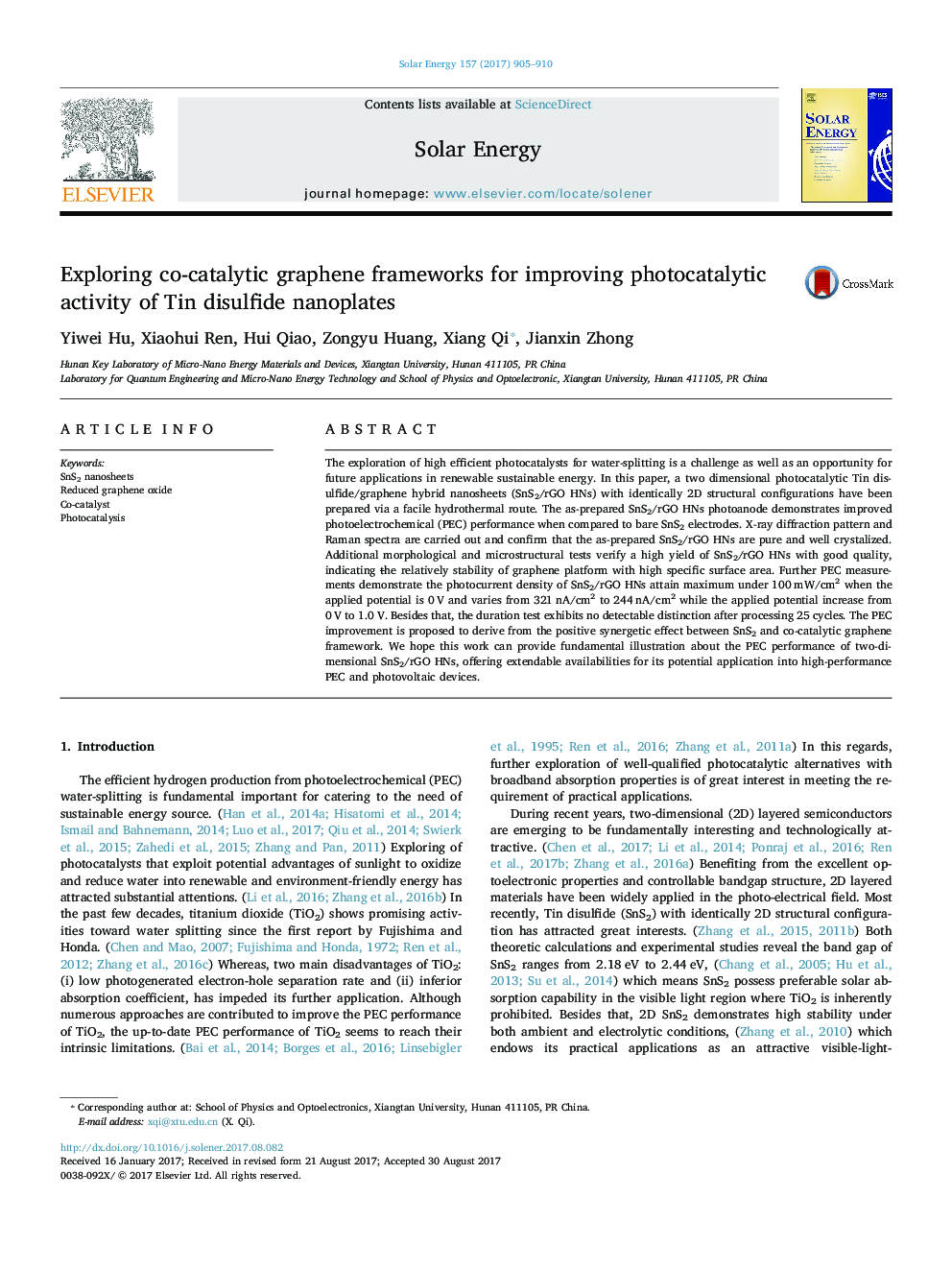| Article ID | Journal | Published Year | Pages | File Type |
|---|---|---|---|---|
| 5450929 | Solar Energy | 2017 | 6 Pages |
Abstract
The exploration of high efficient photocatalysts for water-splitting is a challenge as well as an opportunity for future applications in renewable sustainable energy. In this paper, a two dimensional photocatalytic Tin disulfide/graphene hybrid nanosheets (SnS2/rGO HNs) with identically 2D structural configurations have been prepared via a facile hydrothermal route. The as-prepared SnS2/rGO HNs photoanode demonstrates improved photoelectrochemical (PEC) performance when compared to bare SnS2 electrodes. X-ray diffraction pattern and Raman spectra are carried out and confirm that the as-prepared SnS2/rGO HNs are pure and well crystalized. Additional morphological and microstructural tests verify a high yield of SnS2/rGO HNs with good quality, indicating the relatively stability of graphene platform with high specific surface area. Further PEC measurements demonstrate the photocurrent density of SnS2/rGO HNs attain maximum under 100Â mW/cm2 when the applied potential is 0Â V and varies from 321Â nA/cm2 to 244Â nA/cm2 while the applied potential increase from 0Â V to 1.0Â V. Besides that, the duration test exhibits no detectable distinction after processing 25 cycles. The PEC improvement is proposed to derive from the positive synergetic effect between SnS2 and co-catalytic graphene framework. We hope this work can provide fundamental illustration about the PEC performance of two-dimensional SnS2/rGO HNs, offering extendable availabilities for its potential application into high-performance PEC and photovoltaic devices.
Related Topics
Physical Sciences and Engineering
Energy
Renewable Energy, Sustainability and the Environment
Authors
Yiwei Hu, Xiaohui Ren, Hui Qiao, Zongyu Huang, Xiang Qi, Jianxin Zhong,
